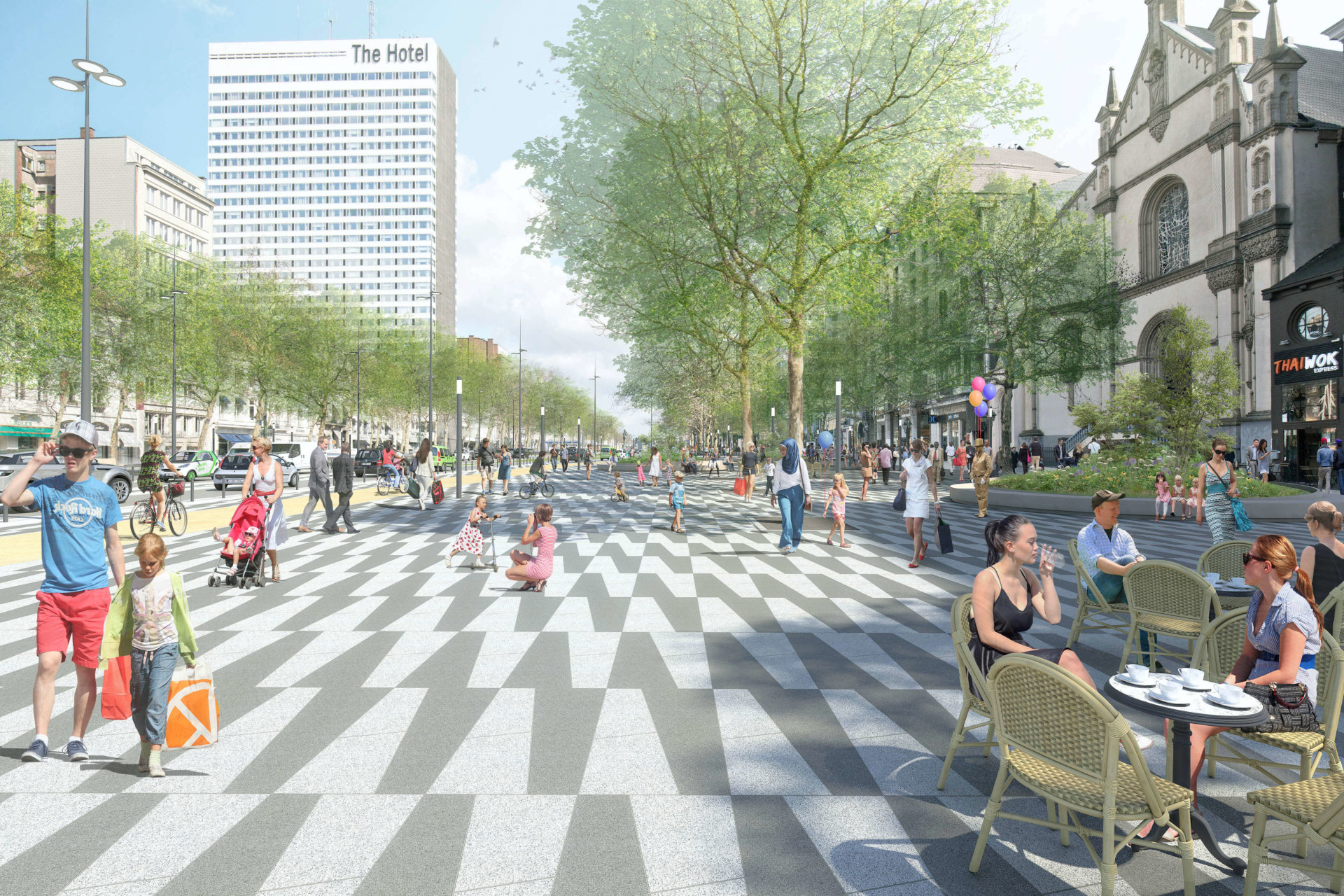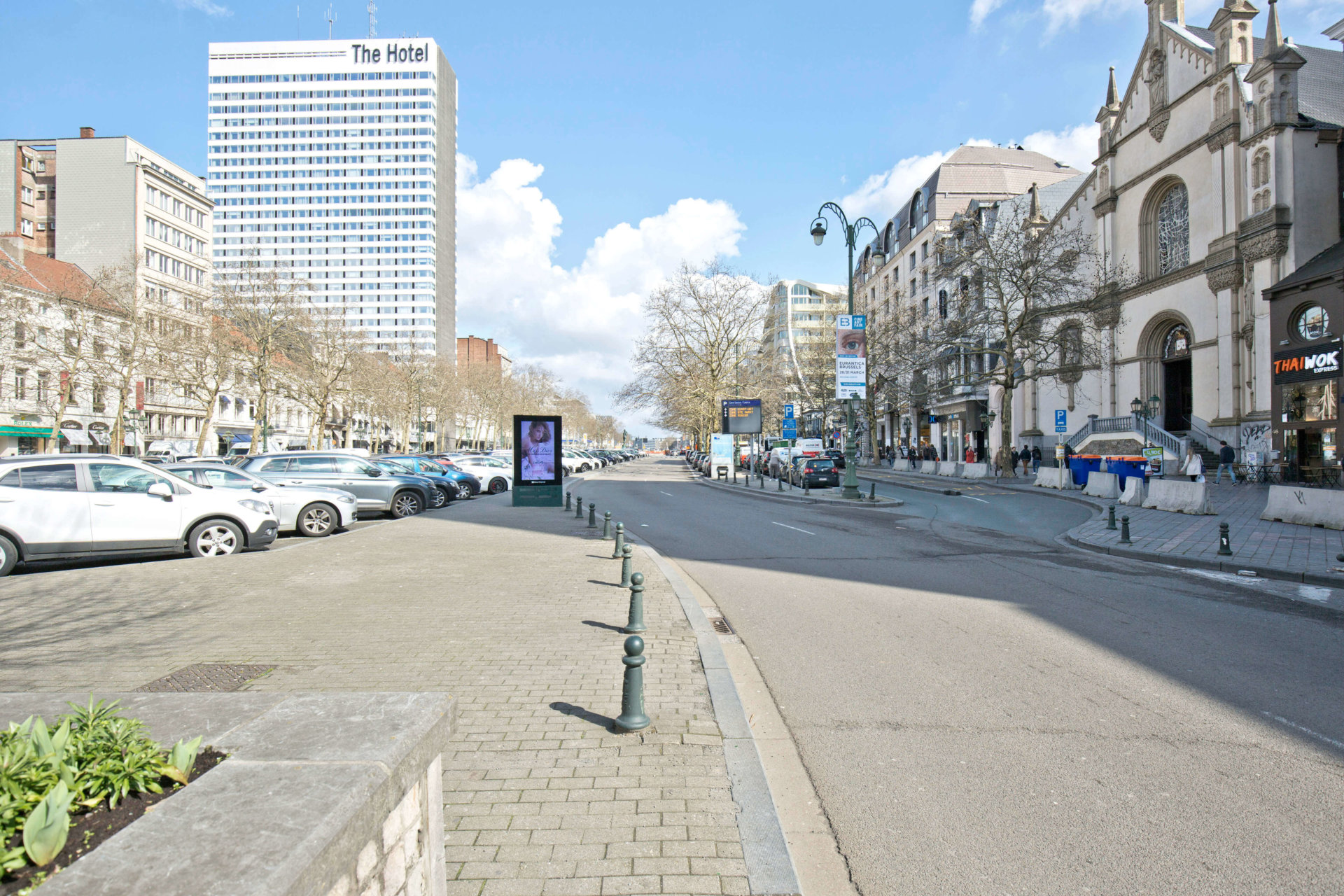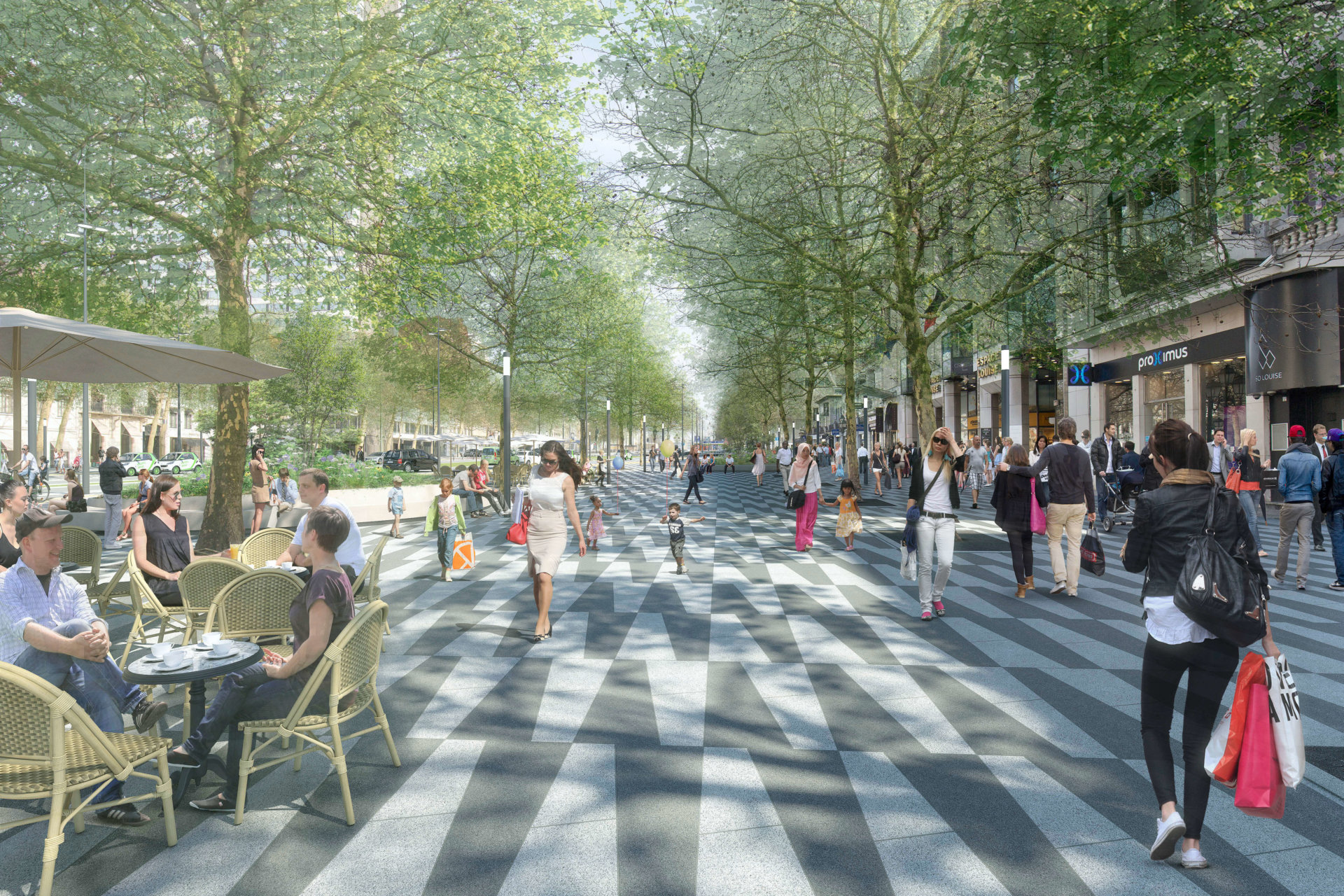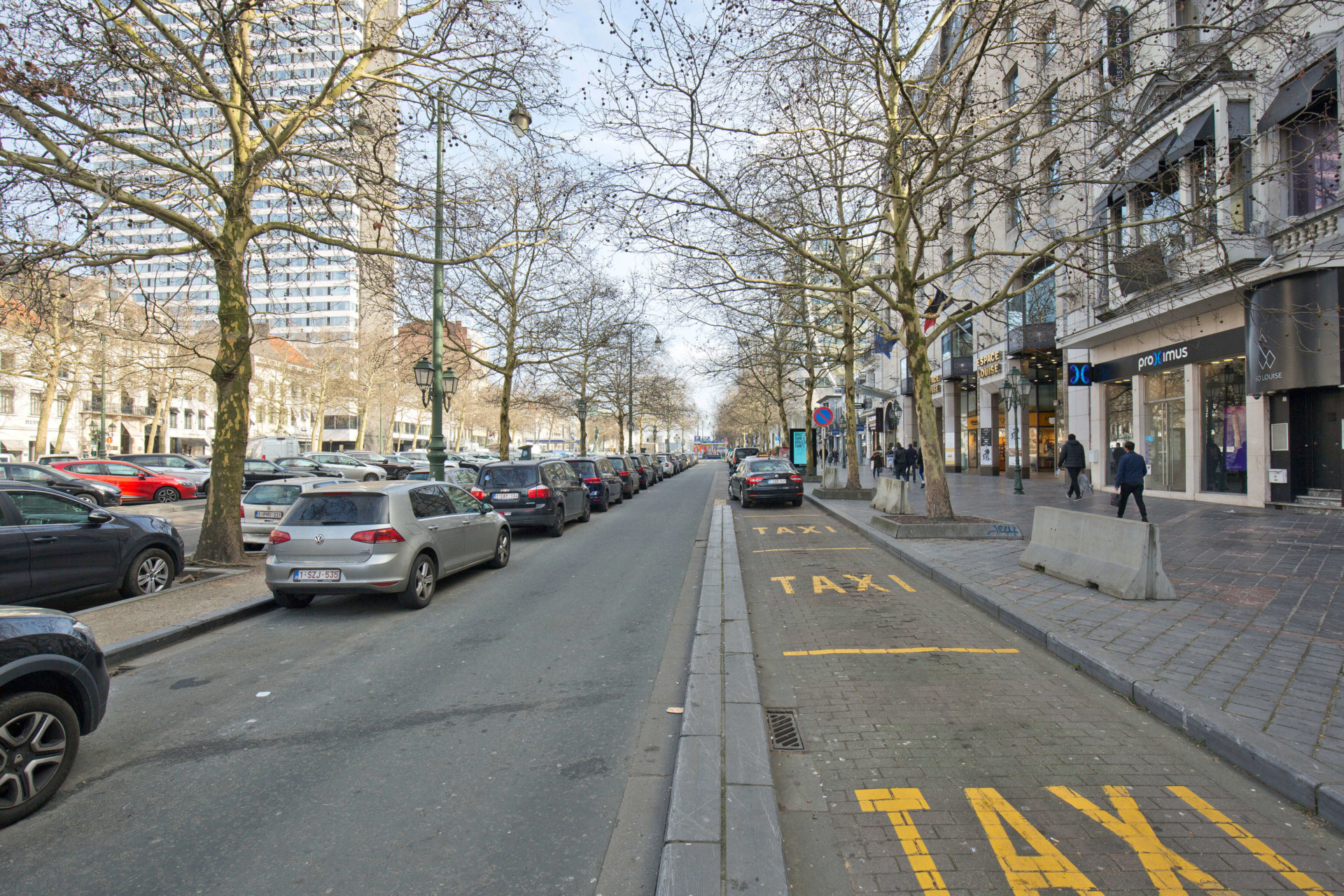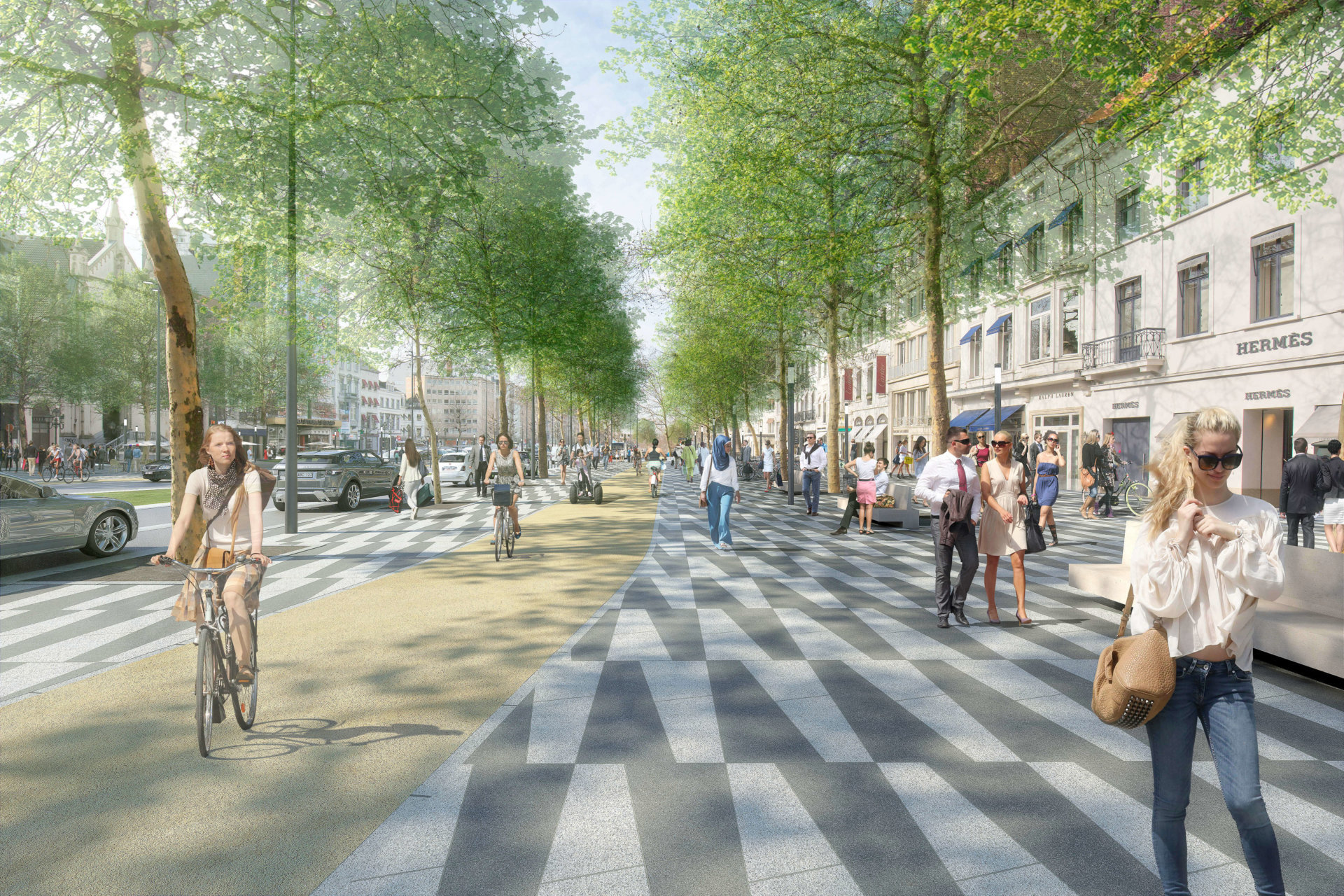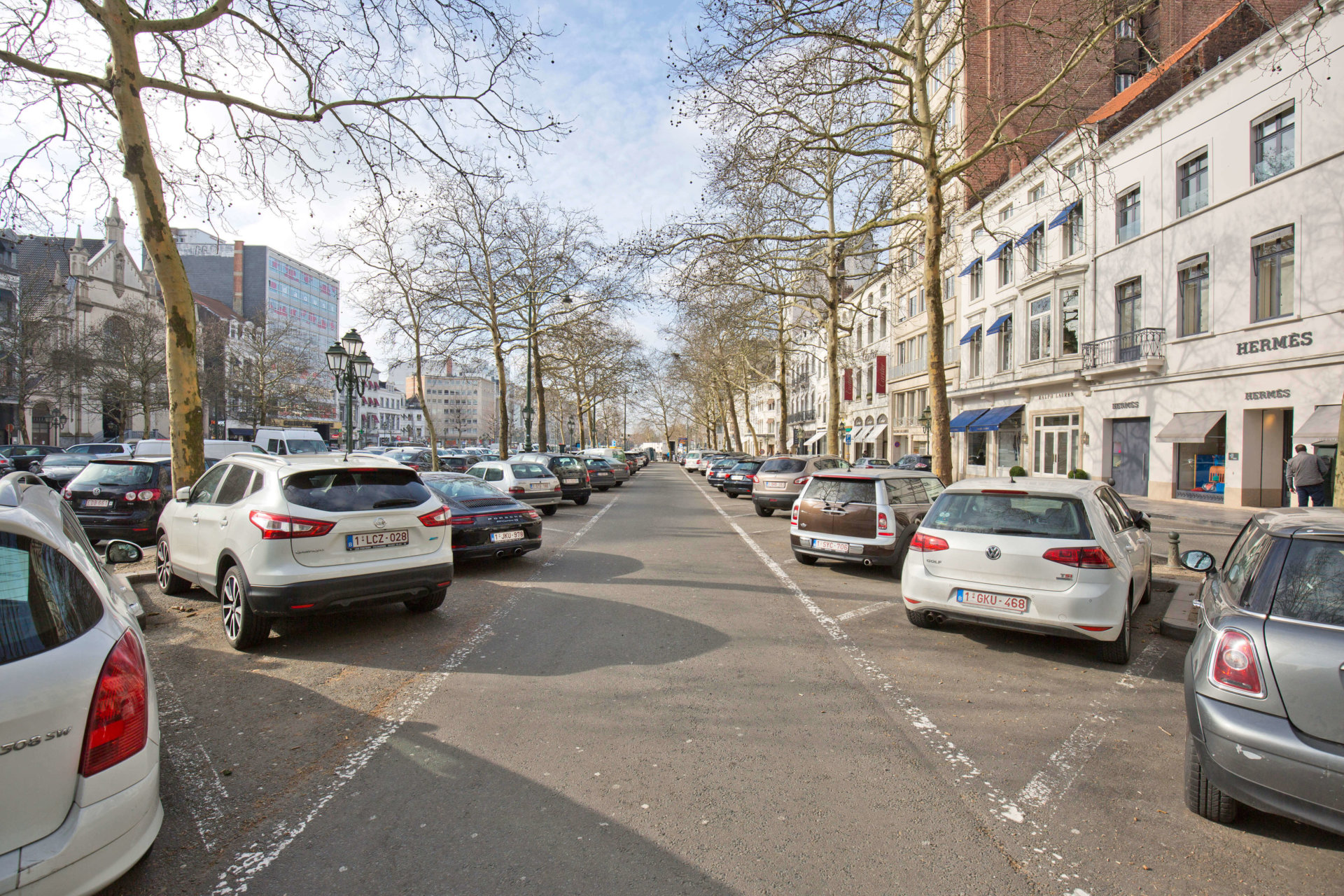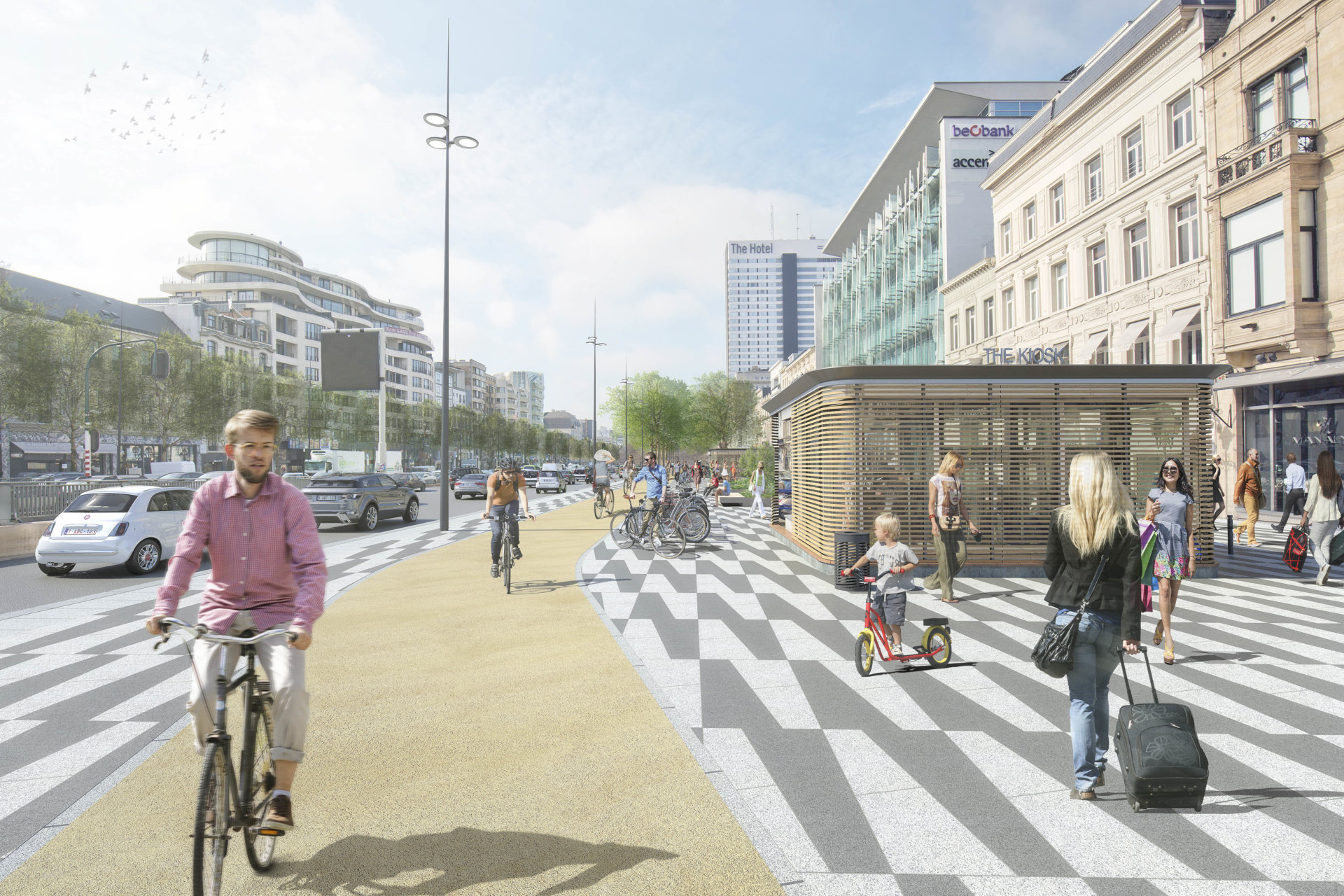Redevelopment Avenue de la Toison d'Or and Boulevard de Waterloo
![]() since 2016
since 2016 ![]() City of Brussels, Ixelles, Saint-Gilles
City of Brussels, Ixelles, Saint-Gilles
Avenue de la Toison d’Or and Boulevard de Waterloo need a thorough reconstruction in order to become future-proof. That’s why this project aims to prepare this commercial area for the future. Many examples from abroad show that people who go shopping attach more and more importance to the quality of the surroundings. Avenue de la Toison d’Or and Boulevard de Waterloo need a thorough reconstruction in order to become ready for the future. The project aims to increase the attractiveness of the public space and to reinforce the commercial activity.
The small ring used to be a promenade connecting the suburbs with the city centre, but now, it has become a physical border in various places. Today, the small ring at Avenue de la Toison d’Or and Boulevard de Waterloo is an unattractive area forming a physical and psychological barrier between the pentagon - the city centre - and the rest of the city.
The Brussels Region wants to create a new dynamic in this area. The section between Porte de Namur and Louise, one of the most important commercial districts of Brussels, will undergo a complete makeover.
The ambition is to adapt it according to the current needs of its inhabitants, merchants and visitors. At the same time, the symbolic role of this district in the Brussels Region, the connection between the upper and lower town, will also be highlighted.
In 2016, an international architecture competition was launched in order to redevelop this area in a qualitative way. At the end of the project call, five agencies were selected by a jury of experts led by the Brussels chief architect, to further develop their design.
In November 2016, the design of agencies Bruno Fortier, Polo and Arcadis was selected as the winner. After consultation with locals, shop-owners, the involved municipalities and other stakeholders in the neighbourhood, the Brussels Region submitted a permit application.
City promenade with trees
Today, more than 85 percent of the public space is devoted to cars. A complete redesign from facade to facade will change that and turn it into a city promenade with trees. It has to become a quality public space where shoppers, Brusselers and visitors can stroll, rest and enjoy some food and the commercial offer. The project focuses on strengthening this commercial and gastronomic area in the upper city.
A shared space with homogeneous materials, city furniture, attention to lighting and many trees and bushes will connect both sides of the small ring. The surrounding neighbourhoods of Saint Gilles and Ixelles will be reconnected with the city centre. The most important element to create coherence in the public space is to redesign it with a minimum of height differences.
In addition to the promenade, the connection between the upper and lower town via Egmont Park and the safe crossings on the small ring, there will also be a large esplanade and a kiosk near the Louise roundabout.
The Bruno Fortier, Polo and Arcadis agencies have developed an evolutionary project that is perfectly compatible with a possible roofing of the tunnel exit. That way, a similar esplanade at Porte de Namur can be constructed later.
Greening is an essential part of the project. That’s why the existing row of trees will remain and 38 trees will be added. Round and rectangular benches with planters will embellish the area, just like bushes on the esplanade and along the promenade. The entrances to Egmont park will also be improved.
Finally, the lighting will be completely reviewed throughout the area and scenographic lighting will be installed to add value to the public space and increase the sense of safety after sunset.
More space for pedestrians and cyclists
The project provides more space, safety and comfort for pedestrians and cyclists and improves the circulation of public transport. It is fully in line with the current and future mobility vision adopted by the Brussels government in the Good Move plan. Throughout the area, separate and two-way ochre cycle lanes will be added on both sides. They will be part of the safe, separate cyle paths that are added along the entire length of the small ring.
There will be several safe crossings in order to connect the promenades of Avenue de la Toison d’Or with those of Boulevard de Waterloo.
As regards car traffic, the project’s ambition is to separate transit from local and destination traffic. The redevelopment guarantees a good traffic flow by encouraging drivers whose destination is not in the area to use the tunnels. Transit traffic will be kept out of the surrounding residential areas. Based on various simulations and mobility studies, the traffic flow will be optimised thanks to 2x1 lanes on the section between the roundabout and Louise and Rue des Drapiers and 2x2 lanes on the section connecting to the Porte de Namur roundabout. This solution encourages transit traffic to use the tunnels, while local traffic remains possible or is diverted to underground car parks.
The number of parking places above ground will be considerably reduced. This creates perspectives and panoramas and makes room for trees and bushes in the public space. Furthermore, it drastically reduces traffic of drivers searching car parks in the area, this kind of traffic being diverted automatically towards the underground car parks.
The large amount of car parks in the surroundings (Deux Portes, Poelaert, Toison d’Or, The Hotel, Loi,...) offers the ideal solution for visitors wanting to come here by car in the future. There will be a delivery zone with cameras and bollards for retail outlets.
Chers Bruxellois, @BXLmobilite a besoin de vos idées!
— Pascal Smet (@SmetPascal) 14 juli 2017
Beste Brusselaars, @BXLmobiliteit heeft jullie mening nodig! https://t.co/DtOP8b2eHc pic.twitter.com/vMS2godBs5


